frank lloyd wright-designed avery coonley residential art glass windows added to bldg. 51 museum collection
This entry was posted on June 22 2017 by Eric
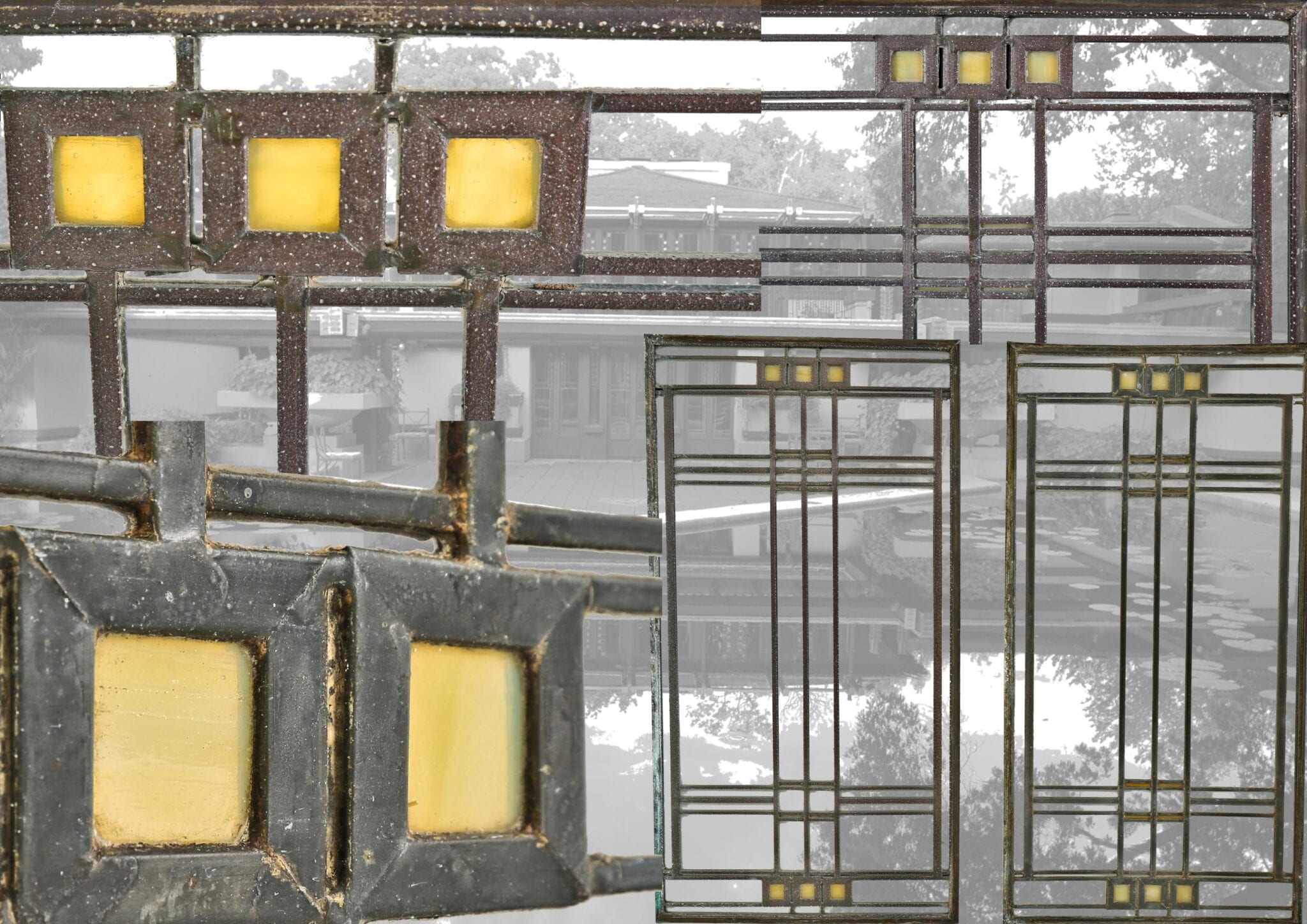
2017 has been an unusually busy year for the bldg. 51 museum. we have had an accelerated increase in purchasing historically-important building artifacts for the up-and-coming second edition hardbound, full-color catalog. this will contain our most recent acquisitions since the publication of the first addition four years ago.
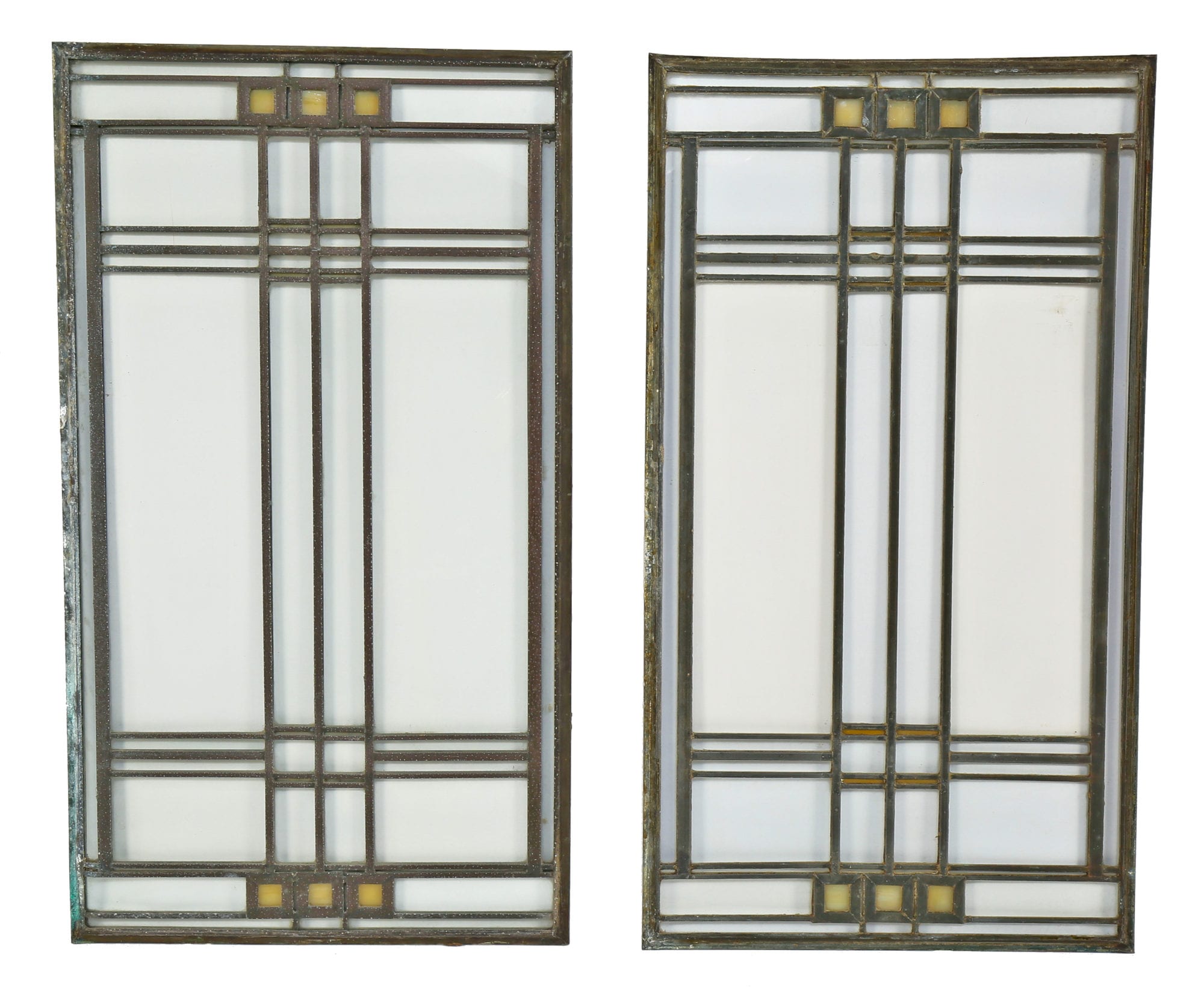
this blog entry highlights the addition of a pair of avery coonley art glass windows (1908) to the ever-growing frank lloyd wright window collection currently housed within the museum. executed by the linden glass works of chicago, the matching set of living room windows contain zinc caming with original copper "wash" remaining largely intact. the two strongly geometric windows are comprised primarily of clear glass, with six diminutive and centrally located opalescent glass squares at the top and bottom of each window.
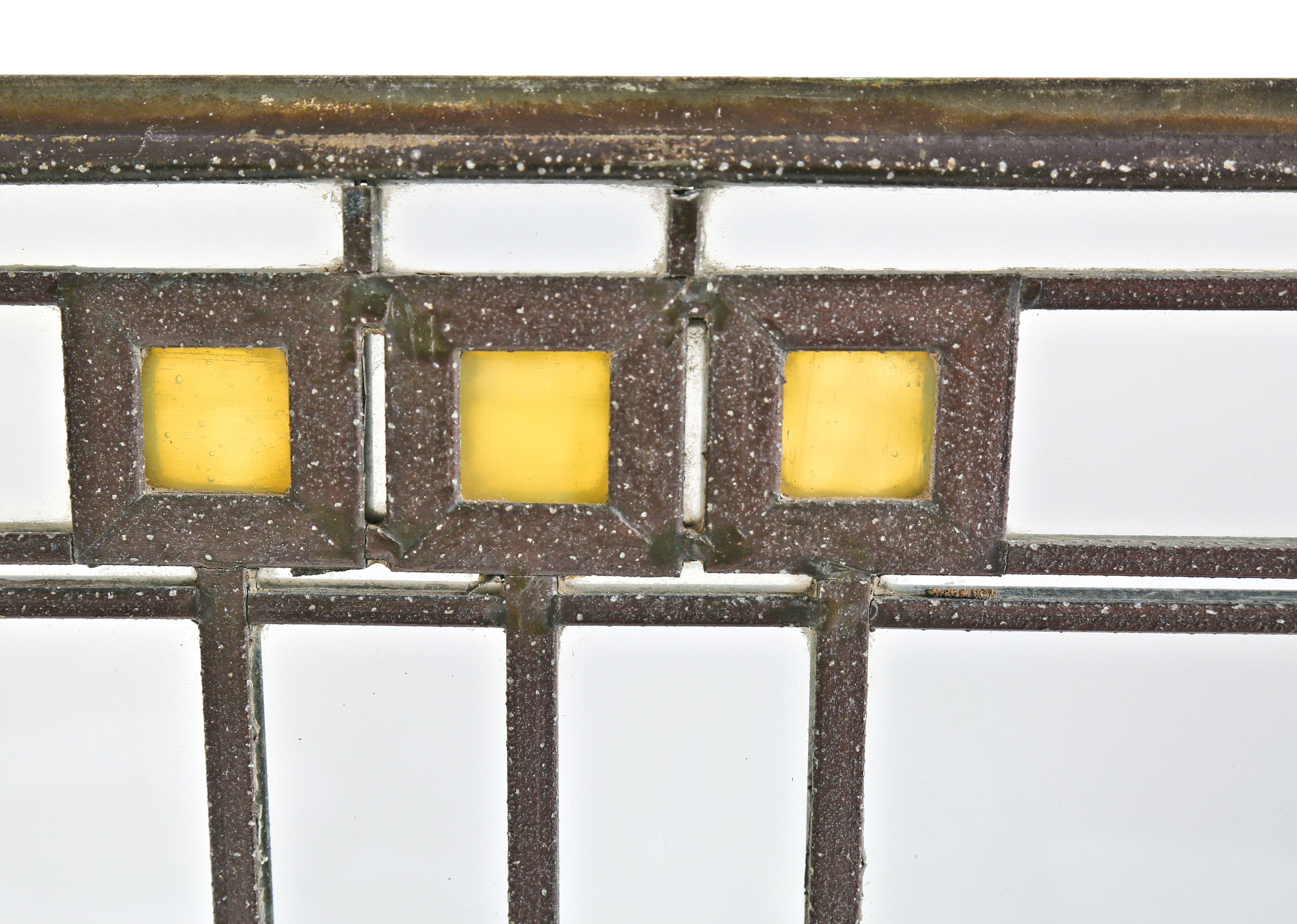
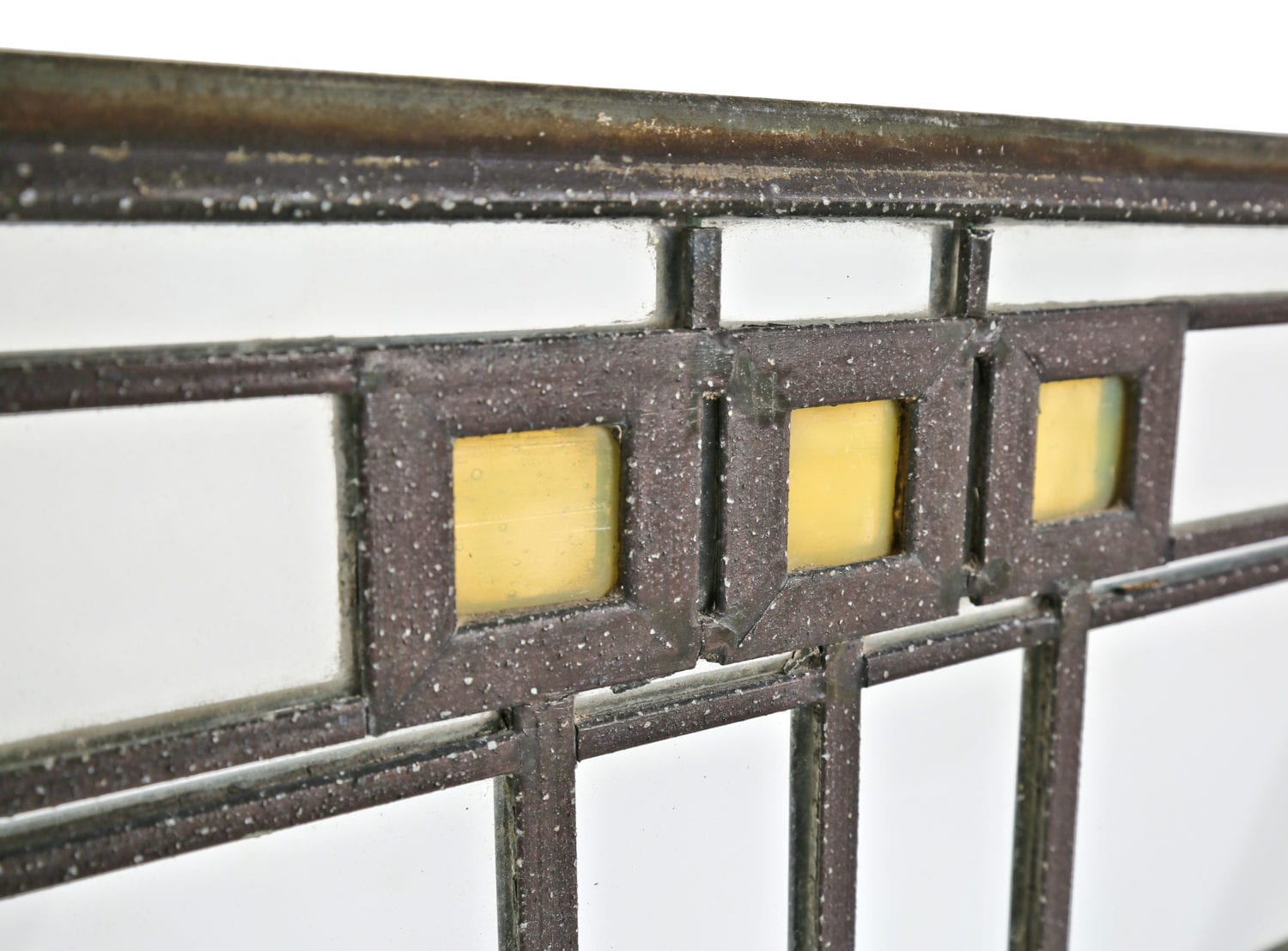
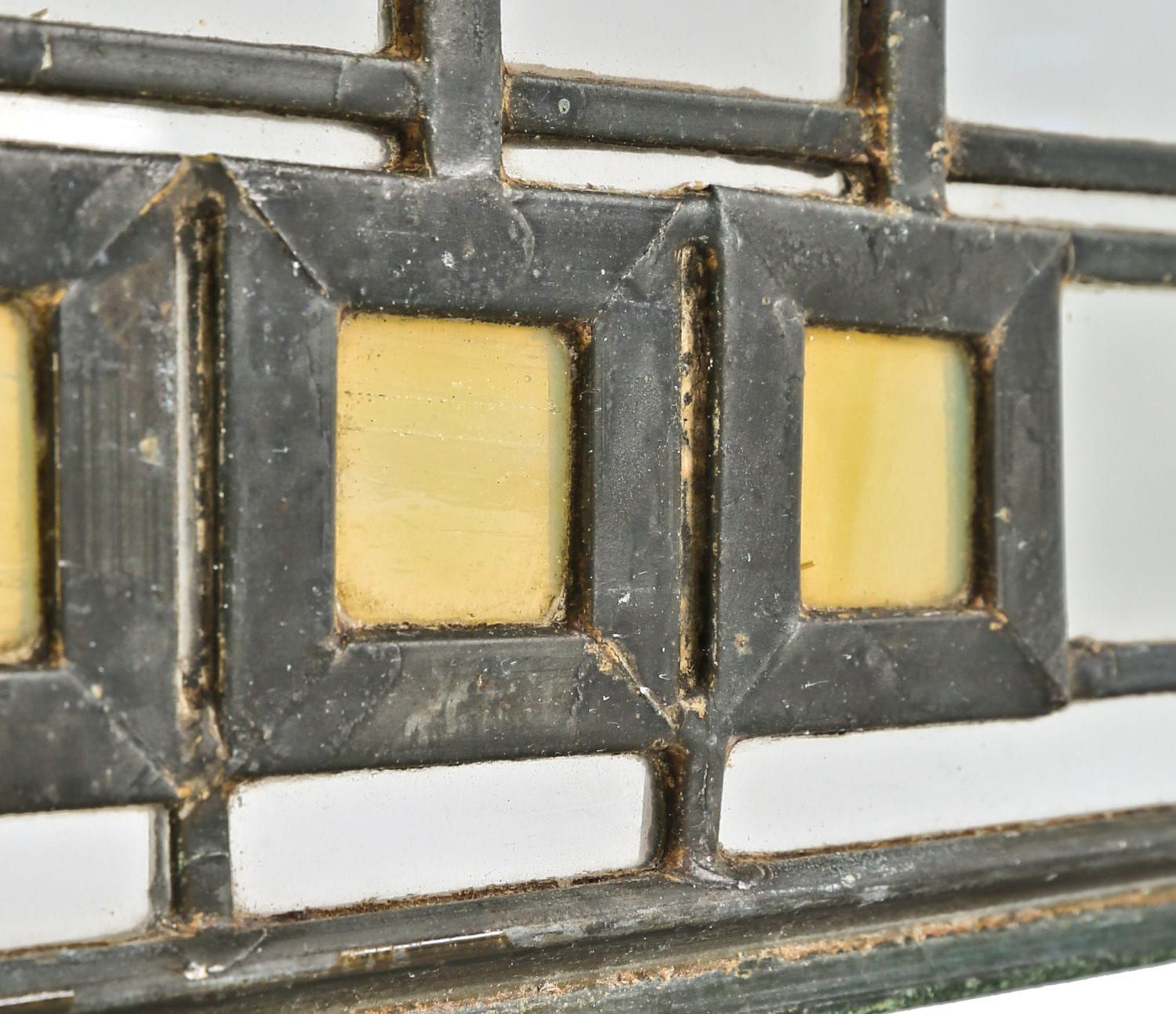
the avery coonley house (built 1908–12) is one of three estates that frank lloyd wright developed and is one of his largest and most elaborate prairie school-homes ever built. the two other multi-building prairie complexes built by the famed architect are the dana-thomas and darwin d. martin houses. the coonley house is also the first example in wright's work of a zoned plan. the raised second floor includes three zones: the public area (living room and dining room), the bedroom wing (with its pendant guest wing) and finally the kitchen and servants areas. the original residence was over-9000-square-feet and built on a ten-acre parcel. the entrance halls, playroom and sewing room are on the ground floor. an entire complex of interrelated buildings with extensive raised and sunken gardens was designed by landscape architect jens jensen. the main structure of the avery coonley estate is the public-living room wing, located on bloomingbank road and behind that facing scottswood road is the bedroom wing of the mansion. the complex also includes a separate stable-coach house and gardener's cottage (1911). along with the robie house, the coonley estate represents the maturation of wright's prairie style, typified by wide overhanging eaves, bands of several art glass "screens" pr casement windows, free-flowing interior spaces and the harmonious blending of surrounding site and structure.
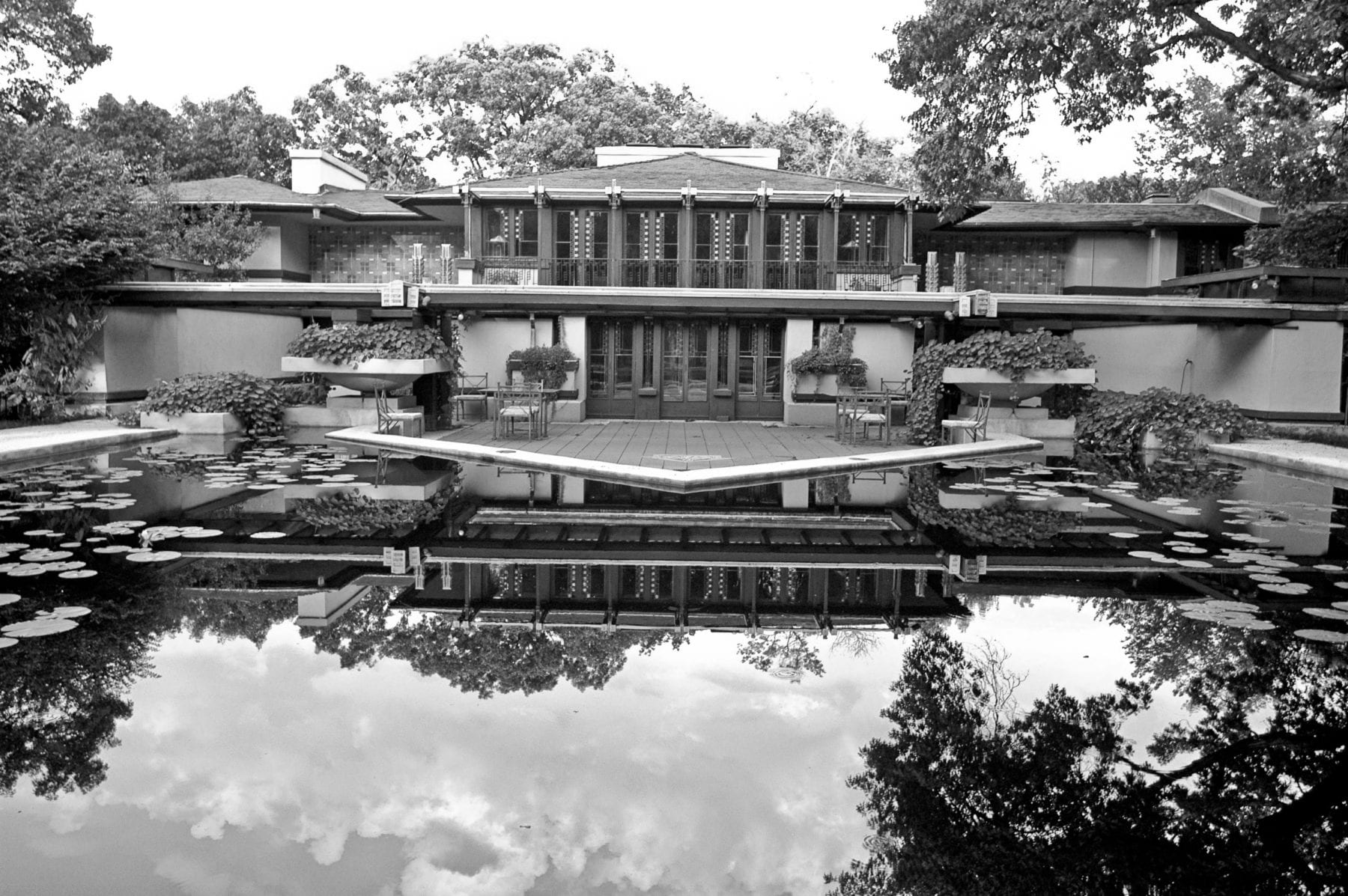
avery coonley, a chicago industrialist and his wife, queene ferry of the detroit-based ferry seed company, were both heirs to industrial fortunes and had an unlimited budget to commission a new residence. the coonleys had investigated wright's other homes and told him that they saw in his work "the countenances of principle." wright stated in his autobiography that "this was to me a great and sincere compliment. so i put my best into the coonley house." wright considered the coonley house among his finest works and gave the coonleys a residence that blended indoors and out and felt as much like a little village as a home, given the way the courtyards, buildings, and garden walls interconnected. he designed all the features and furnishings within the home, including furniture, light fixtures, rugs and textiles. wright had been rumored to have designed dresses worn by queene ferry to compliment the interior surroundings. the designs of the coonley house were included in his 1907 exhibition at the chicago architectural club. construction began a year later.
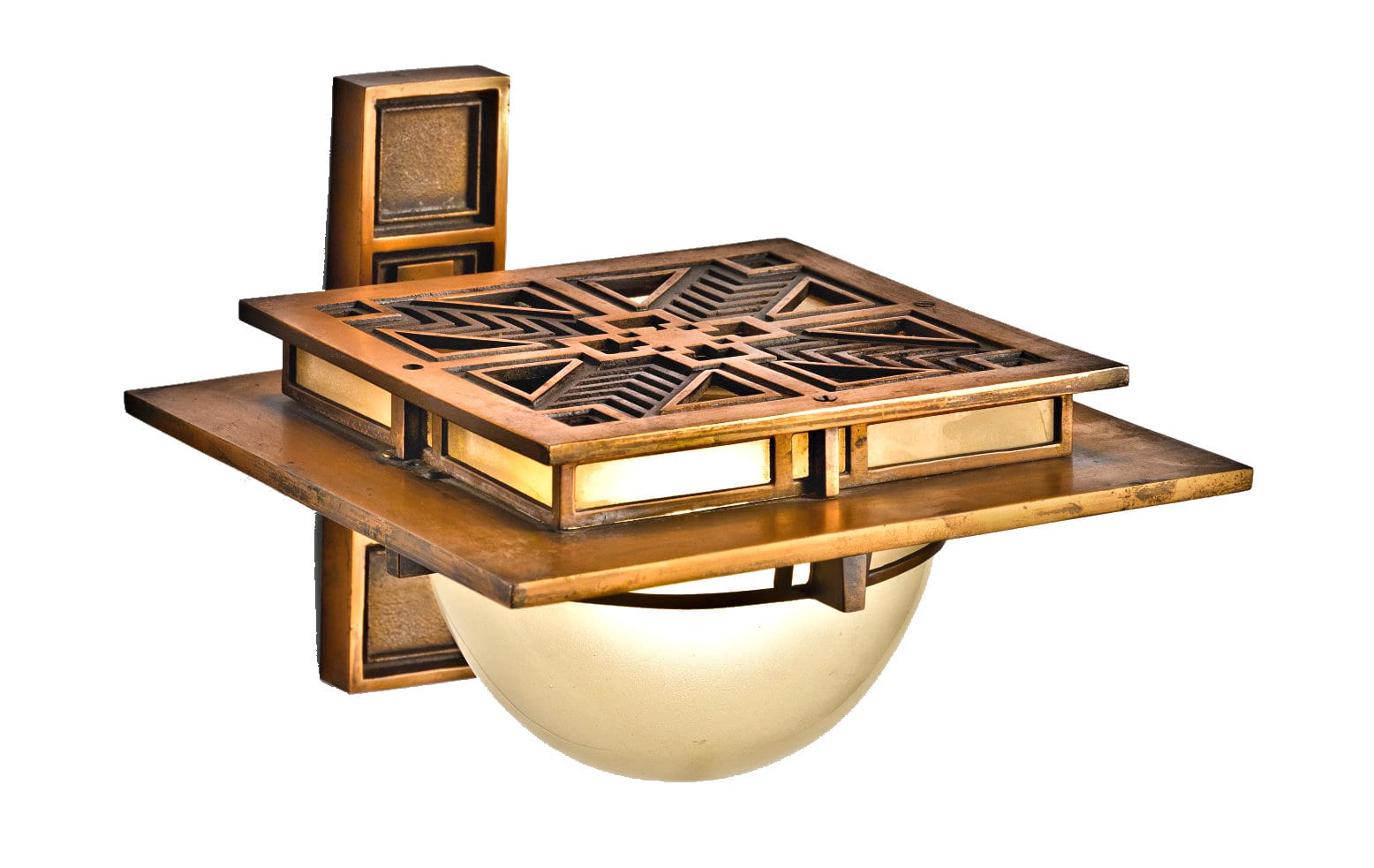
a philanthropic couple, the coonleys had progressive beliefs which included early education for children. at the age of four years, their only daughter elizabeth was too young to attend the local school. to educate her child and others, queene ferry requested that wright design a kindergarten, the avery coonley school playhouse, in 1912 on nearby fairbank road, a block away from the main residence. the art glass windows of the coonley playhouse feature one of frank lloyd wright's most well known designs. a pattern based on balloons, confetti and american flags, very festive for the intended use of the structure, the design used in these windows was artistically striking and represents wright's first departure from his signature style using only straight lines. except for a few relatively plain panes, the art glass windows of the coonley playhouse are all replicas - the originals having been removed in the middle of the 20th century at a time when wright's work was either being saved or dissected and sold for large sums of money. many of the originals are housed in museums such as the metropolitan museum of art in new york and the art institute of chicago which prominently displays a completely intact triptych window system. the colored side of the art glass windows faced the inside of the house, while the outsides that faced the exterior are white. the kindergarten school moved from the coonley playhouse in riverside to a larger facility in downers grove in 1916 and eventually became a full k-8 elementary school and still exists today. the original coonley playhouse near the estate in riverside is currently a private residence.
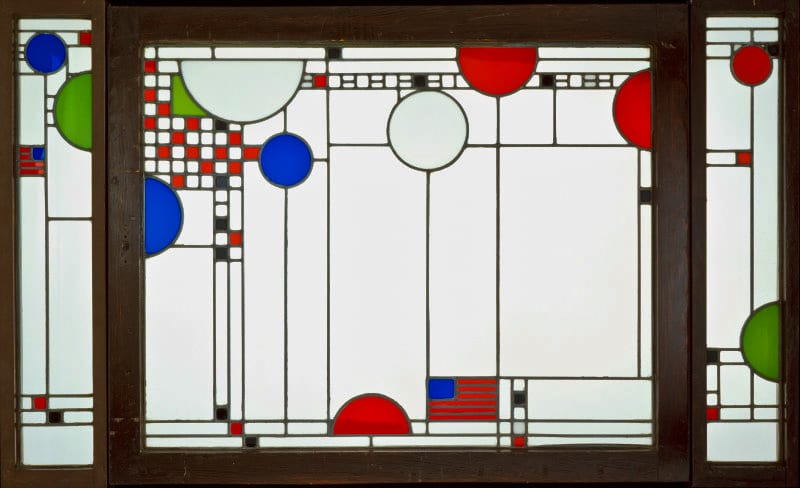
alterations to the coonley estate have been made through the years, by wright and others. a year after the house was completed, wright modified the terrace pavilion, adding bands of art glass doors and windows to allow more light into the second-floor living room and children's playroom below. a pergola with noticeable asian influences was also added. avery coonley sold the house in 1921 to peter kroehler, a furniture manufacturer from naperville, illinois. several architectural changes were made during this period including a sun-room addition to the south, the lily pond was converted into a swimming pool and a pool house was added - probably designed by harry robinson, an apprentice under wright at both oak park and taliesin. in 1952 the property was threatened with demolition to make way for 14 ranch homes. a compromise was reached that allowed developer arnold skow to divide the main house into north and south halves by inserting a firewall, build five new houses on the property and convert the gardener's cottage and stable into separate residences and addresses. the raised gardens were sold off and a modern house was built on the property. even with these radical changes, the house retains nearly most of its original exterior and interior design details, including approximately 270 original art glass windows and doors.

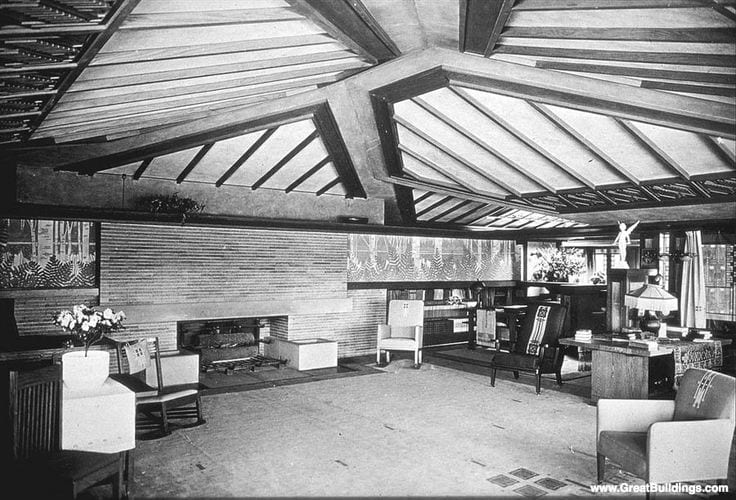
This entry was posted in , Miscellaneous, Bldg. 51, New Products, Events & Announcements, New Acquisitions, Featured Posts & Bldg. 51 Feed on June 22 2017 by Eric
WORDLWIDE SHIPPING
If required, please contact an Urban Remains sales associate.
NEW PRODUCTS DAILY
Check back daily as we are constantly adding new products.
PREMIUM SUPPORT
We're here to help answer any question. Contact us anytime!
SALES & PROMOTIONS
Join our newsletter to get the latest information
























